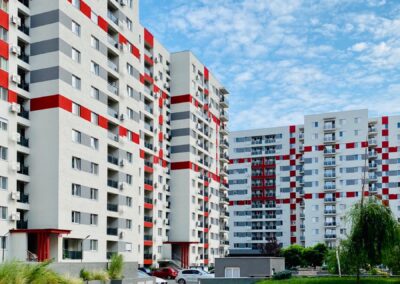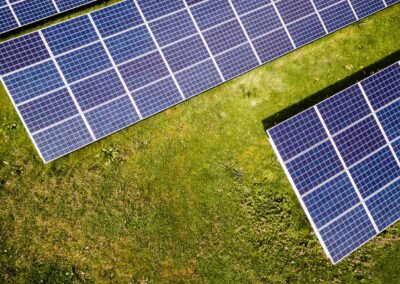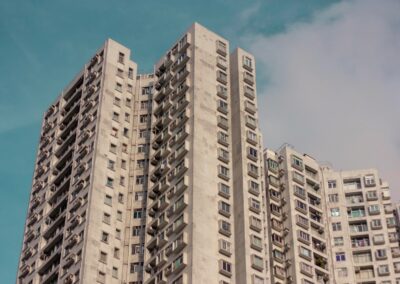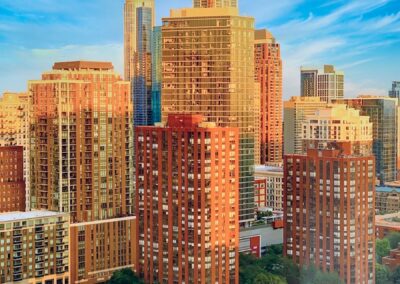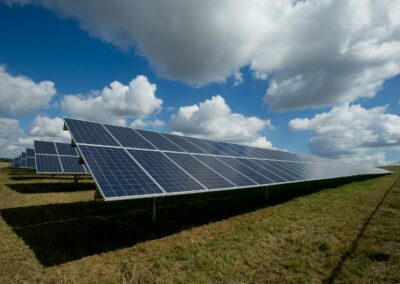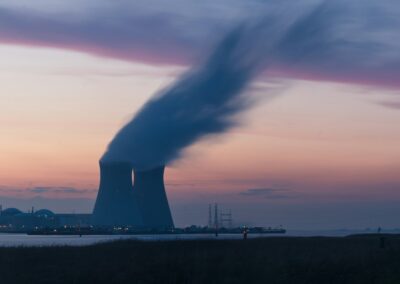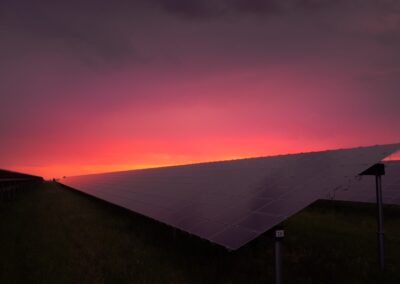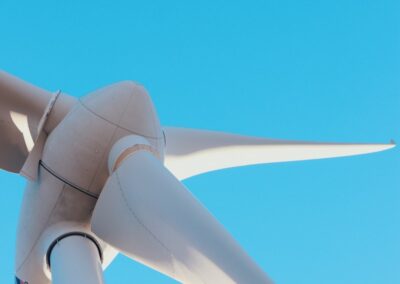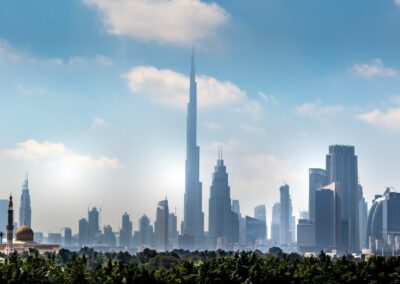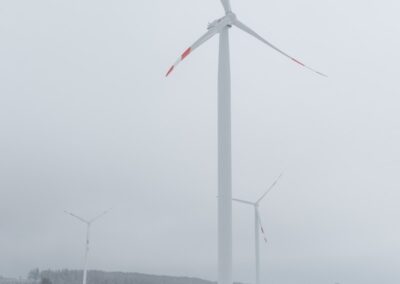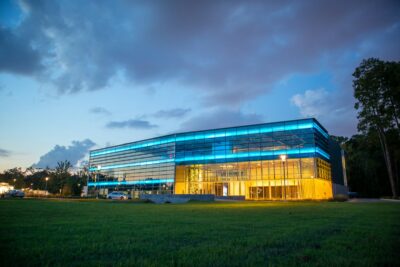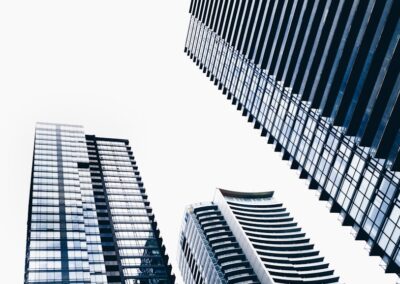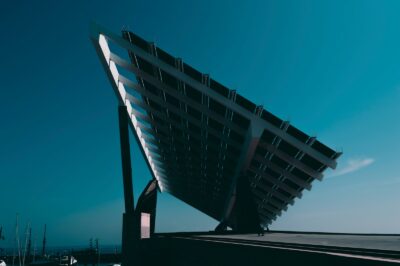Innovations in Sustainable High-Rise Design
The Evolution of Energy-Efficient High-Rise Buildings
Energy-efficient high-rise buildings are revolutionizing urban architecture, responding to the pressing need for sustainability in rapidly urbanizing regions like Saudi Arabia and the UAE. Cities like Riyadh and Dubai are leading the charge by incorporating cutting-edge technologies and design principles to minimize energy consumption and environmental impact. These skyscrapers are not only redefining skylines but also setting new standards for sustainable living and working environments.
In Riyadh, the King Abdullah Financial District (KAFD) stands as a prime example of energy-efficient design. The district’s buildings incorporate advanced insulation materials, energy-efficient lighting, and state-of-the-art HVAC systems to reduce energy consumption. Additionally, the use of smart glass technology allows buildings to adapt to external conditions, optimizing natural light and reducing the need for artificial lighting.
Dubai, a city known for its architectural marvels, is also at the forefront of this trend. The Burj Khalifa, for instance, uses a high-performance exterior cladding system to minimize heat gain, while its water collection system recycles condensation for irrigation. Such innovations highlight the city’s commitment to sustainability and its role as a global leader in energy-efficient high-rise construction.
Harnessing Technology for Sustainable Skyscrapers
The integration of modern technology is critical to the success of energy-efficient high-rise buildings. Artificial intelligence (AI) and the Internet of Things (IoT) play pivotal roles in enhancing building performance. AI can analyze data from various sensors to optimize energy use, predict maintenance needs, and improve overall building management.
Blockchain technology is another game-changer, providing transparent and secure systems for managing energy consumption and distribution. In smart cities like Riyadh and Dubai, blockchain can track energy use in real-time, enabling more efficient energy trading and reducing wastage. This transparency fosters trust among stakeholders and promotes sustainable practices across the urban landscape.
The Metaverse and Generative AI are also influencing the design and functionality of energy-efficient high-rise buildings. These technologies allow architects and engineers to create digital twins of buildings, simulating various scenarios to identify the most efficient designs. This iterative process leads to optimized structures that balance aesthetic appeal with sustainability, shaping the future of urban architecture.
Leadership and Management in Sustainable Urban Projects
Successful implementation of energy-efficient high-rise projects requires visionary leadership and effective management. Leaders in Saudi Arabia and the UAE are exemplifying how strategic vision can drive sustainable urban development. In Riyadh, government initiatives and public-private partnerships are crucial for the execution of large-scale projects like the KAFD, ensuring that sustainability goals are met.
Dubai’s leadership has also played a pivotal role in promoting energy-efficient high-rise buildings. The Dubai Clean Energy Strategy 2050, for example, aims to make Dubai a global hub for clean energy and green economy. This vision is supported by strong leadership that prioritizes investment in sustainable technologies and infrastructure.
Effective management is essential for the success of these projects. Project managers must navigate complex logistical, financial, and regulatory landscapes to ensure timely and efficient completion. Advanced management skills, such as risk assessment, resource allocation, and stakeholder coordination, are vital for achieving sustainability targets. By developing these skills, managers can contribute to the sustainable transformation of urban environments.
The Global Impact of Energy-Efficient High-Rise Buildings
Scalability and Adaptability of Sustainable Designs
The success of energy-efficient high-rise buildings in cities like Riyadh and Dubai provides a model for other urban centers worldwide. The scalability and adaptability of these designs make them suitable for diverse climates and geographies. By learning from the experiences of Saudi Arabia and the UAE, other cities can adopt best practices and customize them to their unique contexts.
To scale these innovations globally, cities must invest in technology and infrastructure. Advanced technologies such as AI, blockchain, and IoT can optimize building performance, making them more efficient and cost-effective. International collaboration and knowledge sharing are essential for the global adoption of sustainable high-rise designs. Governments, private sectors, and academic institutions must work together to develop policies and frameworks that support these innovations.
The scalability of energy-efficient high-rise buildings also extends to retrofitting existing structures. Older buildings can be upgraded with modern technologies to improve their energy efficiency. This approach not only extends the lifespan of buildings but also reduces the environmental impact of construction. By embracing both new construction and retrofitting, cities can accelerate their journey toward sustainability.
Economic and Environmental Benefits
Energy-efficient high-rise buildings offer significant economic and environmental benefits. For businesses, these buildings reduce operational costs by lowering energy consumption. Improved energy efficiency translates into cost savings, enhancing the financial performance of companies. Additionally, buildings that meet sustainability standards often attract higher occupancy rates and command premium rents, contributing to business success.
From an environmental perspective, energy-efficient high-rise buildings help reduce greenhouse gas emissions and combat climate change. By minimizing energy use, these buildings decrease the demand for fossil fuels, promoting the transition to renewable energy sources. Green buildings also improve air quality and reduce the urban heat island effect, making cities healthier places to live and work.
The economic and environmental benefits of energy-efficient high-rise buildings extend beyond individual projects. At a macro level, these buildings contribute to the overall sustainability of cities. They support the development of green economies, create jobs in clean energy sectors, and enhance the resilience of urban infrastructure. By prioritizing energy efficiency, cities can achieve long-term economic growth and environmental sustainability.
The Future of Urban Architecture
The future of urban architecture is being shaped by the ongoing advancements in energy-efficient high-rise buildings. As cities continue to grow and face new challenges, the demand for sustainable solutions will increase. Innovations in building materials, design techniques, and smart technologies will drive the evolution of high-rise architecture, making cities more resilient and adaptable.
Emerging trends such as biophilic design, which integrates natural elements into urban spaces, will further enhance the sustainability of high-rise buildings. Incorporating green roofs, vertical gardens, and natural ventilation systems can improve the environmental performance of buildings and create healthier living environments. These trends reflect a holistic approach to urban design, where sustainability and human well-being are intertwined.
In conclusion, the integration of energy-efficient high-rise buildings in cities like Riyadh and Dubai is pioneering a new era of sustainable urban development. By leveraging advanced technologies, fostering strong leadership, and developing effective management skills, these cities are setting a global example for sustainable urban growth. As the world continues to urbanize, the lessons learned from these initiatives will be invaluable in shaping the future of cities worldwide.
#EnergyEfficientBuildings #SustainableUrbanDesign #HighRiseArchitecture #GreenBuildings #SmartCities #AIinConstruction #BlockchainTechnology #RiyadhSustainability #DubaiInnovation #UrbanDevelopment #LeadershipInConstruction #ProjectManagementSkills



